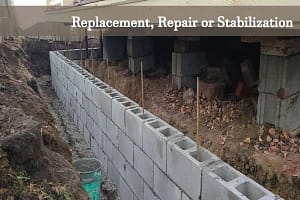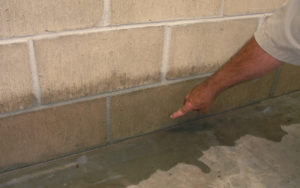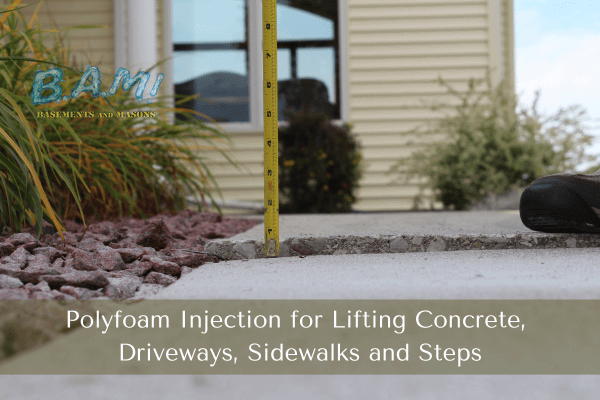The Greatest Guide To Best Basement Waterproofing
The Greatest Guide To Best Basement Waterproofing
Blog Article
Not known Incorrect Statements About Best Basement Waterproofing
Table of ContentsAn Unbiased View of Best Basement Waterproofing10 Simple Techniques For Best Basement WaterproofingSome Ideas on Best Basement Waterproofing You Need To KnowSome Ideas on Best Basement Waterproofing You Should KnowGetting My Best Basement Waterproofing To Work
AdvantaClean's skilled experts and service technicians will certainly situate the water source. If wall or slab cracks are existing, we will infuse polyurethane and epoxies right into the fractures and secure the compromise, stopping further moisture from going into.Proper grading around the home to direct dampness far from the structure. Setting up, fixing, or cleansing seamless gutters and downspouts. Inside or external waterproofing with filler, sealant, and/or water-proof paint. Setting up basement air flow systems, conditioning systems, or cellar dehumidifier systems to get water out of your basement. Picking AdvantaClean's basement waterproofing solutions is a reliable way to deal with wetness and protect against mold and mildew from compromising the framework of your home and the health of your family.

Some Known Details About Best Basement Waterproofing
You can waterproof just your interior wall surfaces, which might solve the problem. Or you can waterproof your exterior walls, which is a better wager however more expensive. Below's the scoop on the different kinds: These thick layers are cement-like. Once they dry, they adhere completely to concrete and masonry walls. Best Basement Waterproofing.
Swirl the brush at the last of application to offer the wall an appealing, completed look. Concrete waterproof finishings can not be put on previously repainted surfaces; inspect the tag. A 5-gallon container costs about $60. Also called densifiers, they appropriate just for walls that haven't been repainted or sealed.
You brush, roll, or spray it on a lot even more thickly one gallon covers simply 75 square feet, not the 300 square feet typical with common paint. Water-proof paint is fine for do it yourself application. You can use it over repainted surfaces, and paint over it once it's healed (one gallon prices $37).
It can set you back $10,000 to $15,000, depending on the job needed. Exterior waterproofing entails excavating all around the house to the full deepness of the foundation walls, after that mounting a water resistant coating or membrane layer topped by drain panels.
Best Basement Waterproofing Fundamentals Explained
A cellar without waterproofing is kind of like that. Your cellar doesn't desire to go through a downpour without correct defense just as much as you do not want to.
If click over here now you have actually done your research study, you would certainly know there are two kinds of waterproofing: inside and exterior. It can get confusing what they both mean, which one's a far better financial investment, and what will really keep the water out. Don't worry, we assembled this blog to conveniently define both approaches for you and talk about the benefits and drawbacks of each.
Exterior waterproofing is a waterproofing method that entails sealing your home from the exterior. It's type of like a moat around a castle. It includes digging a trench around your entire house to the foundation (about 8 to 10 feet down). The foundation wall surfaces are after that cleansed, sealed, and covered with a waterproof membrane layer or sealer.
The Best Strategy To Use For Best Basement Waterproofing
The greatest advantage of exterior waterproofing is that it avoids water from entering your basement in the initial location. Groundwater and heavy rainfalls can seep in through the cracks in your foundation, so outside waterproofing can prevent water from entering your home.

Interior basement waterproofing entails waterproofing from the within. Any type of water that leaks into your basement is redirected prior to it touches your flooring. It's type of like using a raincoat under your clothing. It includes two points: a water drainage track and a sump pump. It functions by sealing the within your cellar wall surfaces and floorings so water that tries to get in is transported out via a sump pump.
The Of Best Basement Waterproofing
It's an effective method to water resistant your cellar. The downside of interior basement waterproofing mostly has to do with the installment process.
In final thought, outside and indoor basement waterproofing are both effective methods of securing your home from water damages. Exterior waterproofing develops an obstacle that protects against water from entering your home, while indoor waterproofing reroutes water that does enter your home. And it's vital to keep in mind that outside waterproofing is an expensive and turbulent setup procedure when compared to indoor waterproofing.
Whichever approach you choose, make certain you choose a trustworthy and reliable contractor for the job. Both methods call for seasoned employees to take care of the work. If you have any kind of concerns regarding basement waterproofing, please connect to us. And if you remain in our solution location and have water in your basement, call us for a totally free, no-obligation home inspection.

Report this page